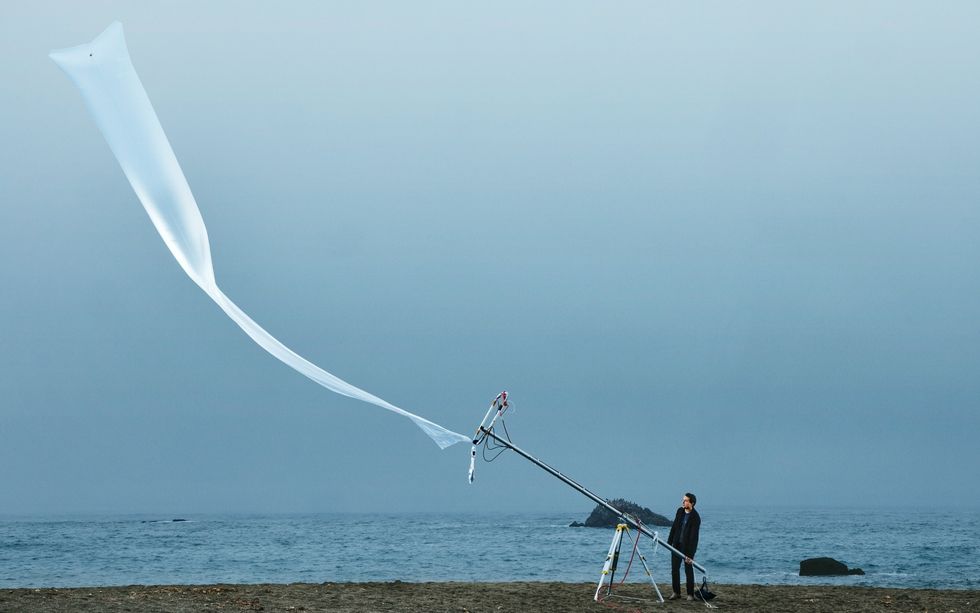In October 2024, Hurricane Milton emerged as one of the fastest-growing storms in recorded history over the Atlantic Ocean. Its rapid intensification caught meteorologists and affected communities off guard, resulting in a tragic toll of 15 lives lost and damages amounting to approximately US $34 billion across Florida. This disaster highlighted a significant gap in weather forecasting capabilities, primarily due to insufficient data during critical storm development phases.
The challenge with predicting hurricanes like Milton often lies in the data collection process. Traditional methods necessitate flying specially equipped aircraft into storms, where human pilots risk their lives to deploy dropsondes—sensors that gather vital atmospheric measurements. Unfortunately, this approach is limited by the number of missions that can be conducted, particularly over vast ocean areas where most storms form, leaving substantial data voids in the areas where dangerous weather conditions emerge.
WindBorne Systems, a company co-founded in 2019 by Andrey Sushko and his peers from Stanford University, aims to transform weather forecasting with innovative technology. The organization has developed advanced weather balloons known as Global Sounding Balloons (GSBs), which can remain aloft for weeks, significantly enhancing data collection capabilities compared to conventional balloons that typically operate for only a few hours.
Innovative Balloon Technology Enhances Data Collection
In the lead-up to Hurricane Milton, WindBorne launched six GSBs equipped with dropsondes from a safe distance in Mobile, Alabama. Within 24 hours, these balloons successfully entered the hurricane’s vicinity, gathering critical data on temperature, pressure, humidity, and wind characteristics. This deployment marked the first instance of dropsondes being released by weather balloons, demonstrating a safer and more effective method for data collection.
The data collected was processed through WindBorne’s proprietary AI forecasting model, known as WeatherMesh. The predictions generated by WeatherMesh outperformed those from the U.S. National Hurricane Center, showcasing the potential of AI-driven forecasts to surpass traditional models. Although this launch was primarily an experimental endeavor, it underscored the importance of data accuracy in enhancing forecasting reliability.
WindBorne aims to create what they describe as a “planetary nervous system,” a comprehensive forecasting system that gathers extensive weather data and transforms it into timely, accurate predictions. This system is envisioned to support critical decision-making in various sectors, including national defense, renewable energy, and agriculture, particularly as climate change drives more frequent and severe weather events.
From Research to Reality: The Journey of WindBorne Systems
WindBorne’s origins trace back to a project initiated in 2015 within the Stanford Student Space Initiative. The founding team recognized the limitations of conventional weather balloons, which only observe approximately 15 percent of the globe due to their short flight duration and limited operational range. The team’s solution involved developing autonomous balloons capable of self-navigation and extending their operational duration significantly.
By 2024, WindBorne had introduced WeatherMesh to process data from the GSBs, providing high-level flight instructions to fill specific gaps in data coverage. The balloons are designed with extremely lightweight materials, allowing them to fly at altitudes up to 24 kilometers and operate for over 50 days, gathering more in situ data daily than the U.S. National Weather Service.
Current weather forecasting predominantly relies on physics-based numerical weather prediction models, such as the Global Forecast System (GFS), which integrates data from satellites, ground stations, and conventional balloons. These models face limitations due to the sparsity of atmospheric data, particularly in regions where balloon data collection is infrequent.
In contrast, AI models have rapidly disrupted the weather forecasting landscape by providing faster and more accurate predictions at a lower cost. Notable AI models, including Huawei’s Pangu-Weather and Google DeepMind’s GraphCast, have shown that AI can compete with and even outperform traditional methods. WindBorne’s WeatherMesh has emerged as the leading AI forecasting model, surpassing its competitors by leveraging extensive data collected from its innovative balloon technology.
WindBorne plans to expand its Atlas balloon constellation to approximately 10,000 GSBs, achieving near-continuous global coverage by 2028. This ambitious goal entails conducting around 300 balloon launches daily from multiple locations worldwide. As the company continues to refine its technology, it remains committed to developing a hybrid forecasting approach that integrates AI with traditional meteorological methods.
Reflecting on Hurricane Milton, the success of WindBorne’s technology during such a critical event is a testament to the potential of AI in enhancing weather forecasting capabilities. As the climate crisis intensifies, access to timely and accurate weather predictions will be crucial in safeguarding communities against the threats posed by extreme weather events. With each advancement, WindBorne Systems is poised to play a pivotal role in revolutionizing how society prepares for the forces of nature.
